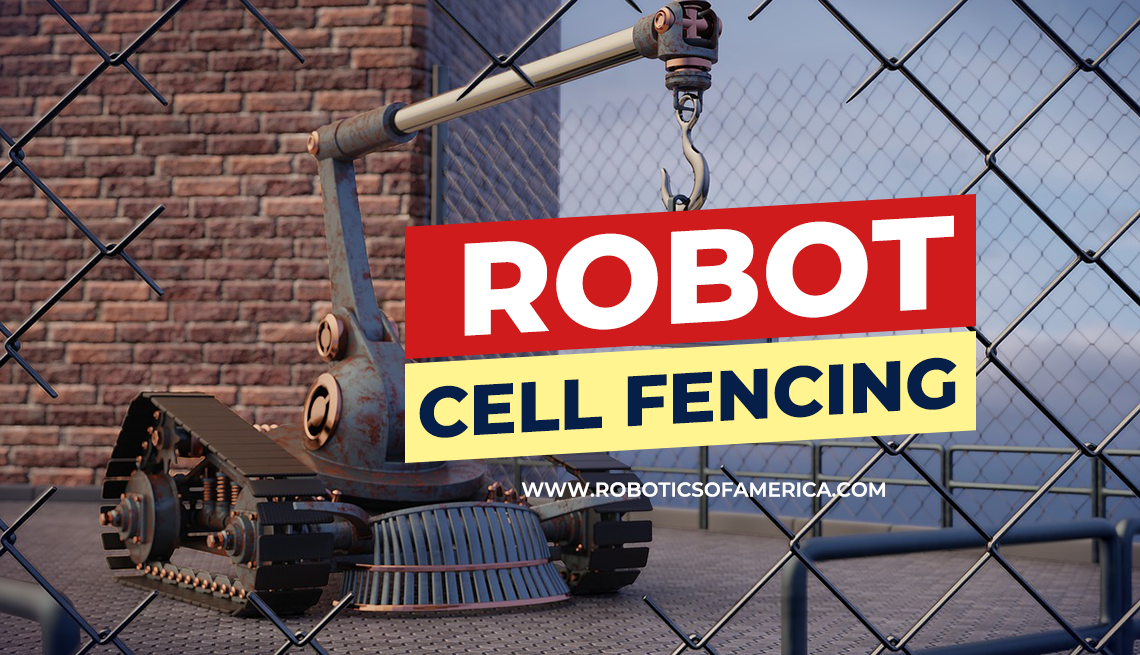
An Introduction to Robot Cell Fencing
Robot cell fencing is one of the best safety options when it comes to many robotic systems. Safety is a crucial factor in robotics. Workers must have protection when they're in or near work cells. The motion of a robot can sometimes injure workers when they are standing too close.
Cell fencing is on the market to ensure that a company’s workers stay out of harm’s way. Many organizations also choose to buy extra physical barriers. These include dividers and arc glare shields. Some companies even consider purchasing invisible barriers. Two common invisible barriers are area scanners and light curtains. Are you ready to learn more about robot cell fencing? Let’s continue.
What Is Robot Cell Fencing?
One of the most common safety mechanisms in the robotics industry is robot cell fencing. Cell fencing creates a strong physical barrier. That barrier will close off the area around each robot. This ensures that there is a stable perimeter around any working system or cell.
The cell fencing often resembles cages. The cages are at least two or three feet tall. The specific design depends on which application an organization is using. It also depends on the square footage of the area needing high-quality safeguarding.
The Importance of Applying Curtains to Robot Cell Fencing
Many companies choose to cover robot cell fencing with special curtains. Why? To ensure that debris never gets thrown at a worker. This can happen when a work cell’s perimeter is unstable. But the debris is not the only factor that cell fencing guards against. It also protects workers from arc glare. Arc glare is when brilliant light comes into view during arc welding operations. It can cause both retinal damage and eye irritation. But severe damage only occurs when the light gets viewed for long periods of time.
Keep in mind that these curtains are crucial to avoid injuries and lawsuits. Think of robot cell fencing curtains like sunglasses. They both protect people’s eyes from too much brilliant light. The curtains are often applied to three sides of every robot cell fencing operation. But safety is not the only factor at play. Welders also appreciate the curtains because they can improve vision. A reduction in glare positions welders to complete their tasks faster.
Curtains are not the only robot cell fencing solution. There are also metal dividers. They are very much like arc glare curtains. But the key difference is that the curtains are transparent and the metal dividers are not. The dividers also protect people’s eyes from too much brilliant light.
Many organizations apply a 180-degree indexing table to their cell fencing set-ups. The tables feature vertical metal dividers at the center. The dividers are often very tall. What is the purpose of these tables? It is to block the robots from getting to close to their human operators. Many companies have positive things to say about these metal tables. That’s because the tables do more than protect workers’ eyes from arc glare. They also protect against weld spray.
How to Ensure a Robot Will Not Impact Your Cell Fencing
Robot cell fencing is continuing to become more common. This means that you can expect more government regulations to pop up. In the meantime, companies are sometimes confused. They do not understand how to make cell fencing safety a priority. The main concern you should have is ensuring that your robots never impact a cell fence. This means that each robot should have plenty of operating space. Operating space refers to where the robot's path runs to and from. Restricted space is what surrounds a robot’s operating space. The dimensions of restricted spaces can vary. It depends on the calculations.
Many organizations calculate their EOAT/robot’s stopping distance. EOT stands for end-of-arm-tooling. A restricted space is the complete max distance that a robot can drift. The drifting will take place after safety monitoring limits have gotten exceeded. So, what should a company do outside of any restricted space? There needs to be a 20” zone put in place.
This zone provides the operator with plenty of space that’s out of harm’s way. Once you have this zone, there is no need for any crush zones or pinch points. Next, a company can put robot cell fencing in place. It often goes around the perimeter of the 20” zone. No matter what type of cell fencing you use, make sure that you take one important action. You should have your workers sign a liability waiver. Waivers will help protect your organization from legal actions related to accidents.
The E-Stops of Robot Cell Fencing
Many robot cell fencing operations feature e-stops. E-stop is an abbreviation for an emergency stop. Having an e-stop is crucial for many organizations. The e-stops come in the forms of buttons that workers can press. The buttons are around the perimeter of a robotic system or work cell. Pressing a button will make the robot stop moving ASAP. Even a teach pendant cannot make a robot move when an e-stop button gets pressed. Say that the e-stop or cell fencing circuit experiences damage. This will trigger a safety reset light to turn on. The light is often located in or near an operator’s station.
After a safety problem has gotten resolved, the operator can press a safety reset button. This will resume the operations within the robot cell fencing. Resets never work until safety problems are 100% fixed. Each worker near the robotic cell fencing should wear plenty of safety equipment. The equipment protects people from cell fencing factors like sparks and flying chips. Routine risk assessments near cell fences should also take place on a regular basis. What is the purpose? It is to serve as another mechanism for preventing risk near robot cell fencing.

